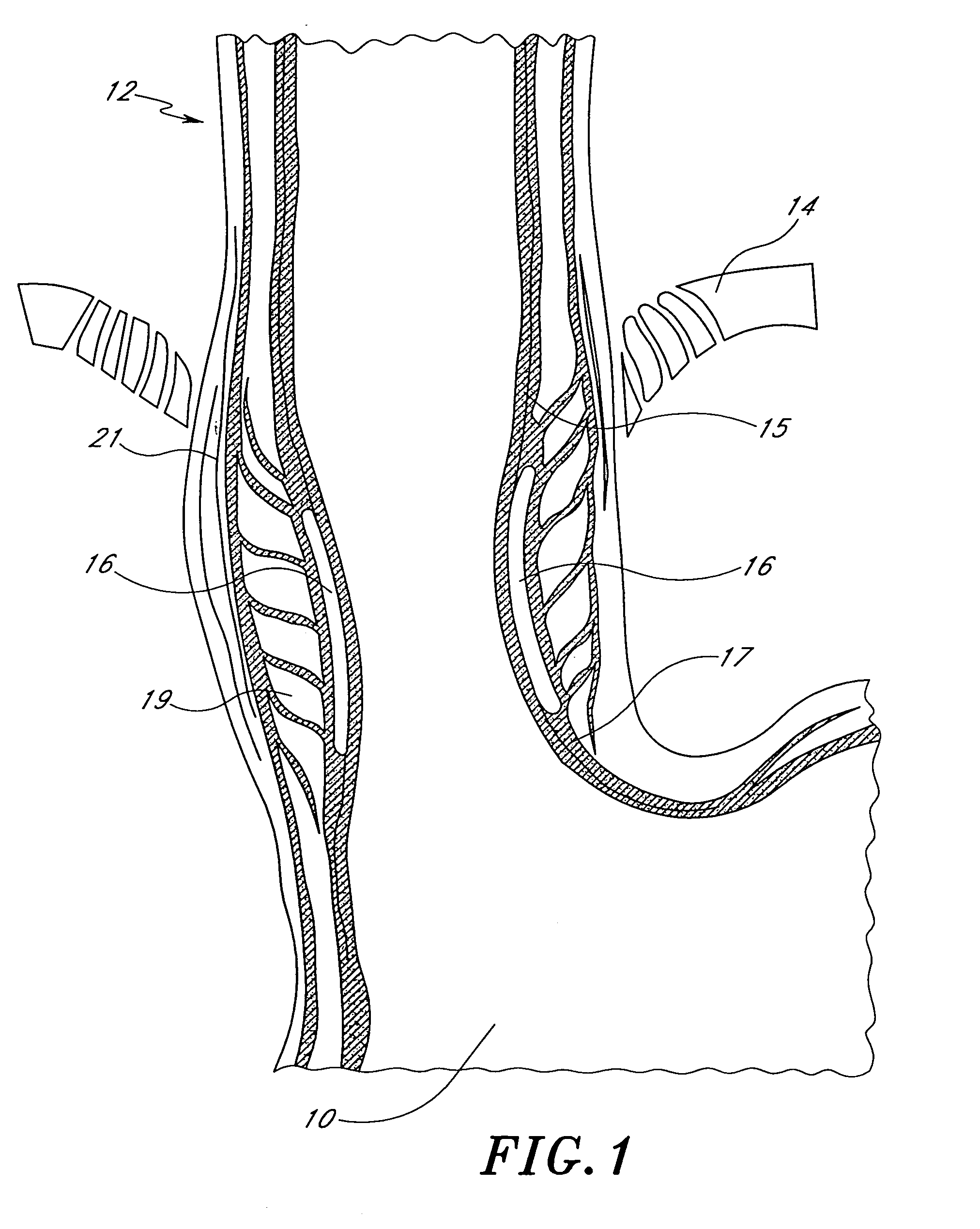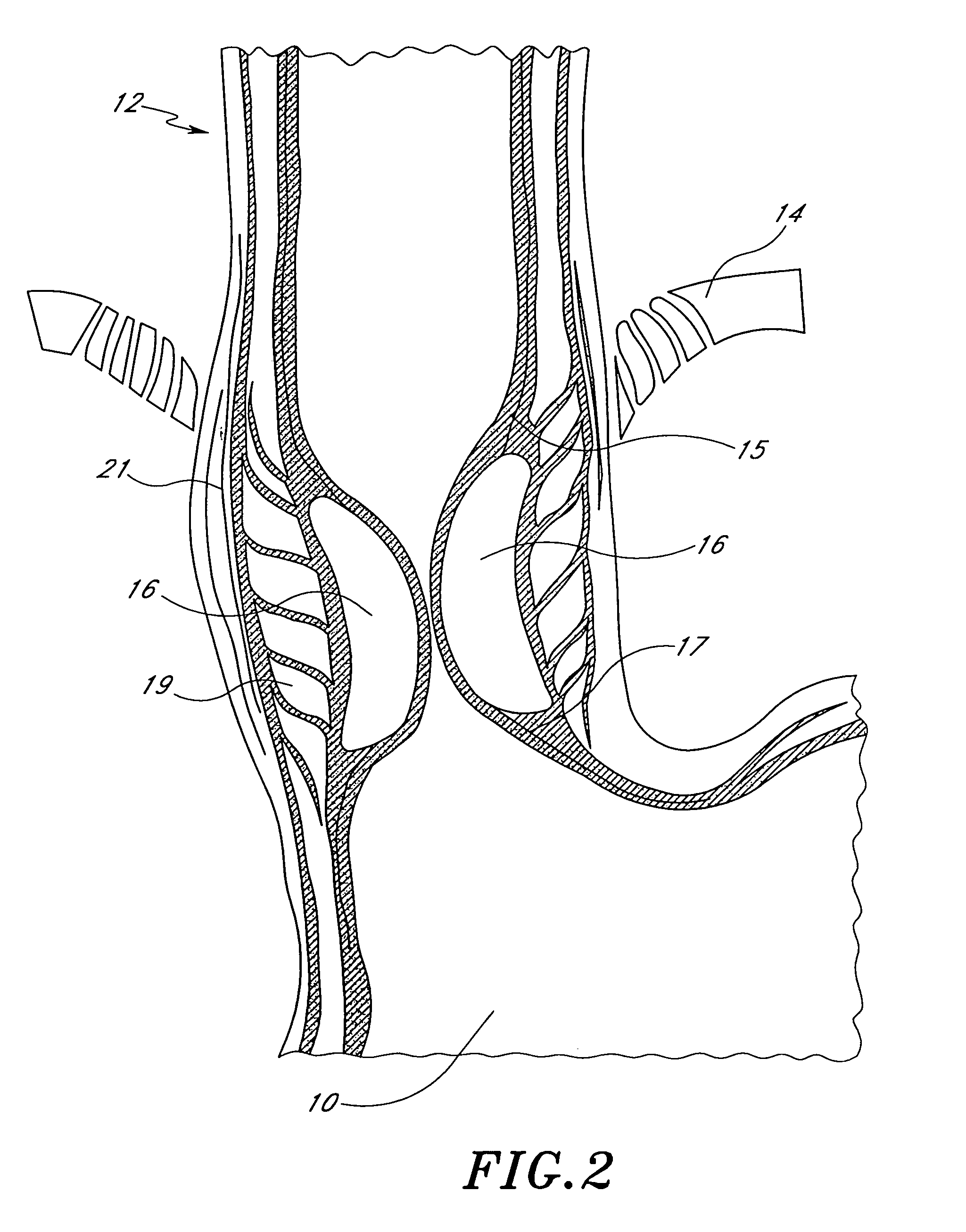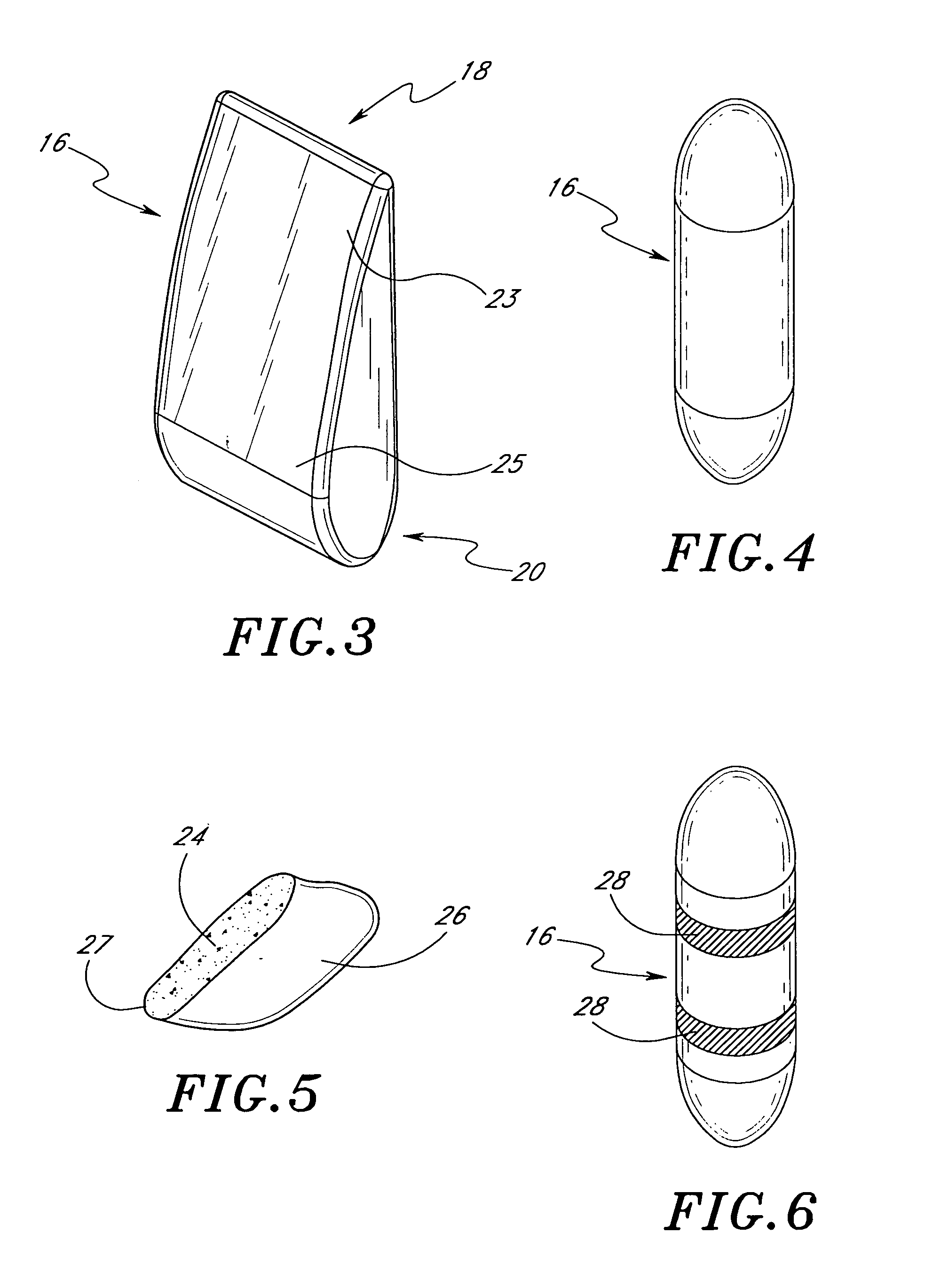Method and device for treating gastroesophageal reflux disease
a gastroesophageal reflux disease and gastroesophageal reflux disease technology, applied in the field of esophageal prosthesis delivery devices, can solve the problems of gastroesophageal reflux disease, more severe problems, and lack of competence of the lower esophageal sphincter
- Summary
- Abstract
- Description
- Claims
- Application Information
AI Technical Summary
Benefits of technology
Problems solved by technology
Method used
Image
Examples
Embodiment Construction
[0044]Referring to FIG. 1, there is illustrated a schematic representation of the stomach 10 and a portion of the lower esophagus 12. The esophagus 12 extends through the diaphragm 14, below which the esophagus 12 communicates with the interior of the stomach 10. A pair of gastroesophageal prosthetic bulking devices 16, in accordance with the present invention, is illustrated at about the junction between the lower esophagus 12 and the stomach 10.
[0045]In the illustrated embodiment, the bulking device 16 is delivered in the submucosa 17. The submucosa 17 is a fibrous layer of tissue positioned between the mucosa 15 and a layer of circular muscle 19. The circular muscle 19 is surrounded by a layer of longitudinal muscle 21, as is well understood in the art. The bulking device 16 may be delivered in the mucosa or beneath the mucosa 15 as is discussed elsewhere herein. In particular, the bulking device 16 may be delivered within the submucosa 17 as illustrated, or at the interface of a...
PUM
 Login to View More
Login to View More Abstract
Description
Claims
Application Information
 Login to View More
Login to View More - R&D
- Intellectual Property
- Life Sciences
- Materials
- Tech Scout
- Unparalleled Data Quality
- Higher Quality Content
- 60% Fewer Hallucinations
Browse by: Latest US Patents, China's latest patents, Technical Efficacy Thesaurus, Application Domain, Technology Topic, Popular Technical Reports.
© 2025 PatSnap. All rights reserved.Legal|Privacy policy|Modern Slavery Act Transparency Statement|Sitemap|About US| Contact US: help@patsnap.com



